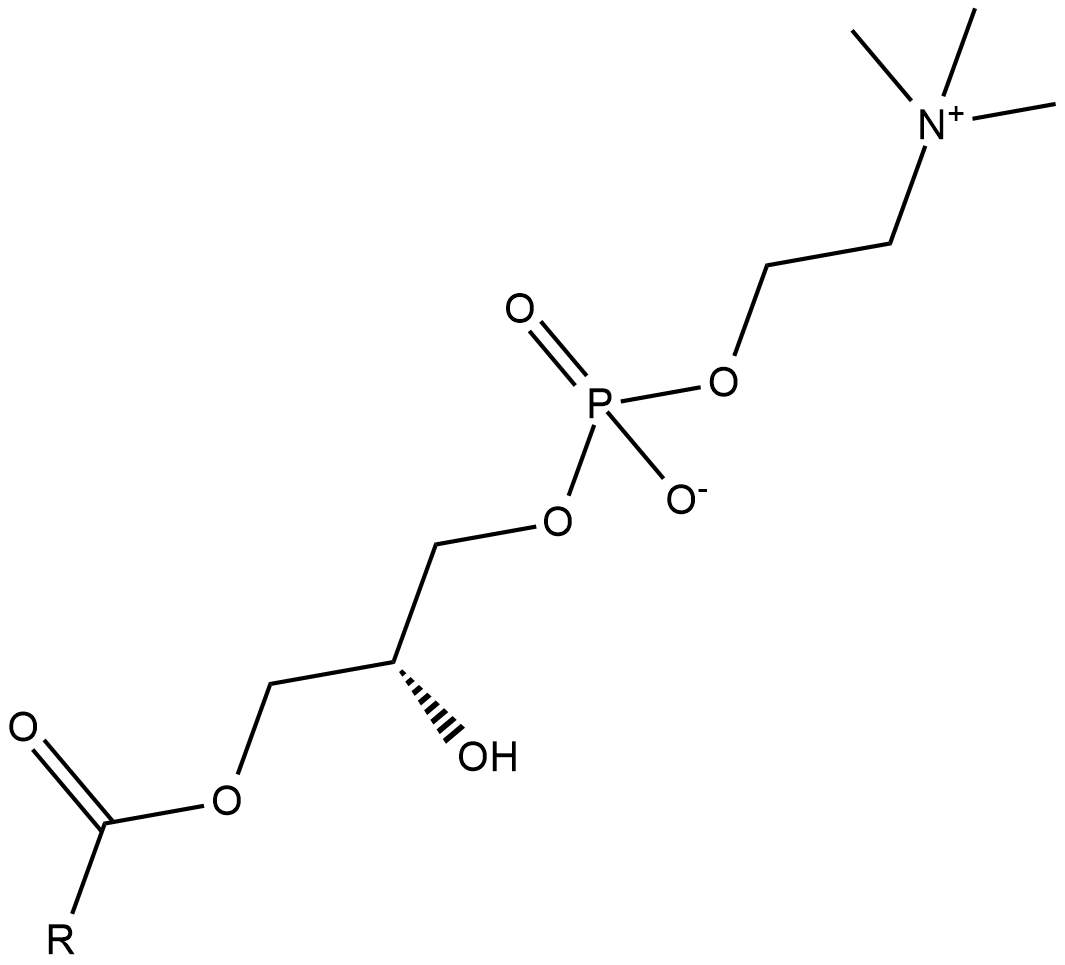Lysophosphatidylcholines (Synonyms: Lyso-Lecithins (egg)) |
| رقم الكتالوجGC18241 |
Lysophosphatidylcholines are produced by hydrolysis of the fatty acid of phosphatidylcholine at either the sn-1 or sn-2 position by phospholipase A2 (PLA2) or by lecithin-cholesterol acyltranferase (LCAT), which transfers the fatty acid to cholesterol.
Products are for research use only. Not for human use. We do not sell to patients.

Cas No.: 9008-30-4
Sample solution is provided at 25 µL, 10mM.
Lysophosphatidylcholines are produced by hydrolysis of the fatty acid of phosphatidylcholine at either the sn-1 or sn-2 position by phospholipase A2 (PLA2) or by lecithin-cholesterol acyltranferase (LCAT), which transfers the fatty acid to cholesterol. [1] Lysophosphatidylcholine has effects on a variety of cell types, including smooth muscle cells, endothelial cells, T lymphocytes, monocytes, and macrophages among others. It is a major phospholipid component of oxidized low-density lipoprotein (ox-LDL), and it accumulates in animal models of atherosclerosis. Lysophosphatidylcholine also has pro-inflammatory properties through its activation and modulation of various signaling pathways, including the ERK pathway as well as through protein tyrosine kinase and G protein-coupled receptor (GPCR) signal transduction. It is released from apoptotic cells in vitro following caspase-3 activation of the calcium-independent PLA2 and acts as a chemoattractant for monocytes.[2] Lysophosphatidylcholine (2 ul, 1%) injected into the caudal cerebellar peduncle of rats induces demyelination of axons in vivo, which are extensively remyelinated by oligodendrocytes six weeks following injection. [3] Lysophosphatidylcholines (egg) is a mixture of lysophosphatidylcholines isolated from chicken egg that has a fatty acid of variable chain length acylated to the sn-1 or sn-2 position.
Reference:
[1]. Matsumoto, T., Kobayashi, T., and Kamata, K. Role of lysophosphatidylcholine (LPC) in atherosclerosis. Curr. Med. Chem. 14(30), 3209-3220 (2007).
[2]. Lauber, K., Bohn, E., Kröber, S.M., et al. Apoptotic cells induce migration of phagocytes via caspase-3-mediated release of a lipid attraction signal. Cell. 113(6), 717-730 (2003).
[3]. Woodruff, R.H., and Franklin, R.J. Demyelination and remyelination of the caudal cerebellar peduncle of adult rats following stereotaxic injections of lysolecithin, ethidium bromide, and complement/anti-galactocerebroside: A comparative study. Glia. 25(3), 216-228 (1999).
Average Rating: 5 (Based on Reviews and 33 reference(s) in Google Scholar.)
GLPBIO products are for RESEARCH USE ONLY. Please make sure your review or question is research based.
Required fields are marked with *




